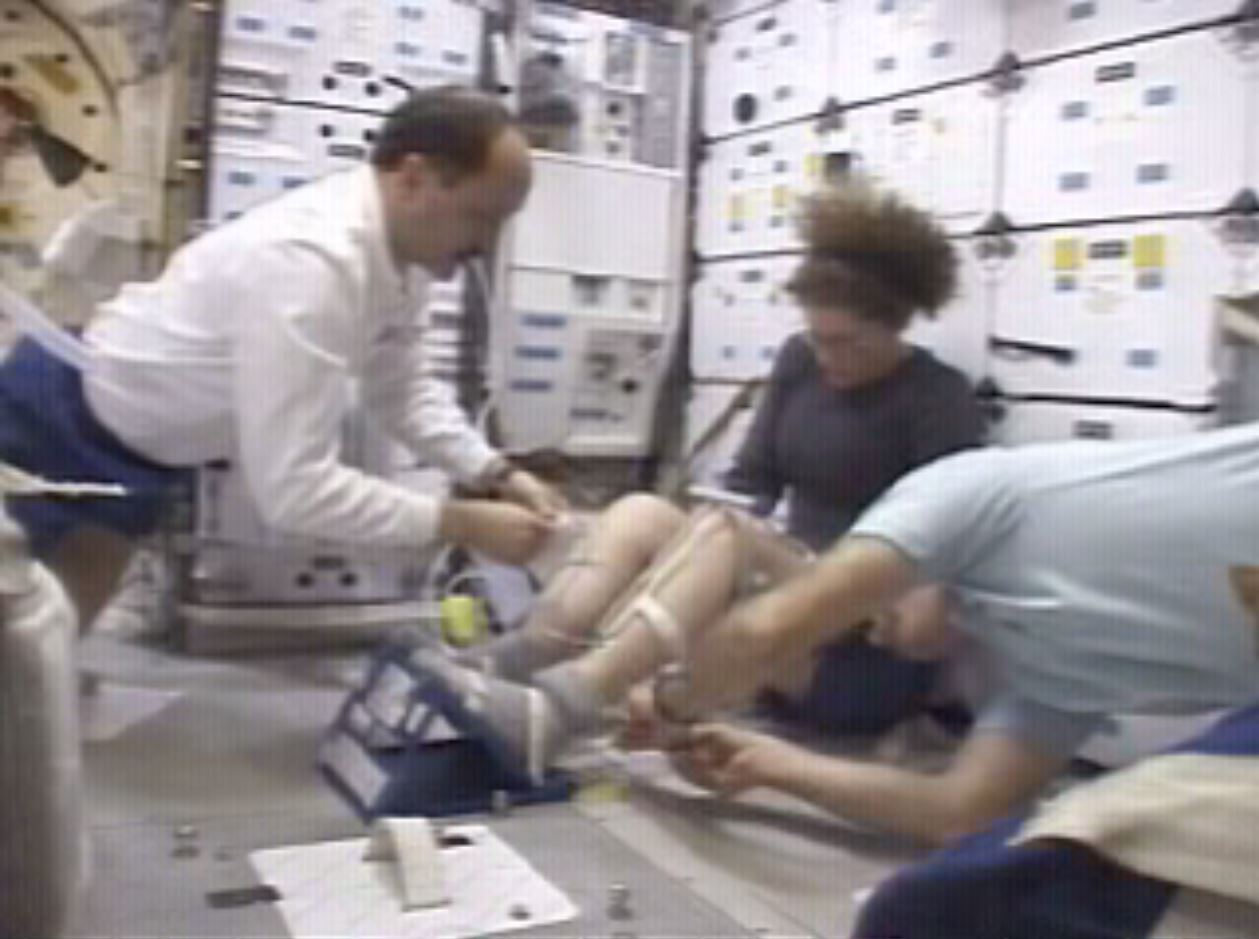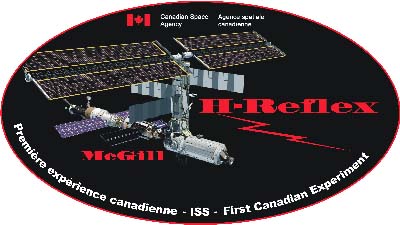H-Reflex flexes its muscles!
The human body is an extraordinary machine, an unending source of wonder. In order to unlock its mysteries, scientists sometimes go out of this world. In 2001 and 2002, Dr. Douglas Watt of McGill University in Montreal studied how the human body adapts to weightlessness through his H-Reflex experiment. H-Rreflex was the first medical experiment completed on the International Space Station.
Results
The H Reflex experiment revealed that spinal cord excitability – i.e., the spinal cord's ability to transmit brain signals – decreased by about 35% in weightlessness. Exercise may therefore be less effective in space, posing a problem that will need to be studied further for long-duration missions. The results of H-Reflex may be of assistance in designing rehabilitation programs for people who are bedbound for long periods of time.
Losing our balance in microgravity
But how does zero gravity affect an astronaut's body? In the weightless space environment, astronauts simply float rather than walk or sit as we do on Earth, and they stop using their body's structure to support themselves. After a few weeks, their muscles and bones undergo changes that affect strength, posture and balance.

Video (MPG, 1.9 MB)
H-Reflex' first experimental subjects, astronauts Susan Helms, James Voss and cosmonaut Yury Ursachev from Expedition 2, have repeated the experiment three times during their 167-day stay onboard the ISS in 2001. (Credit: NASA)
Dr Watt and other experts believed that one way the human spinal cord adapts to microgravity is by responding less and less to stimulation. To compensate for this, more signals from the brain would be needed to stimulate muscles to exert the same effort as they would on Earth. Had this hypothesis been correct, the longer the astronaut remained in space, the less effective his or her exercise routines would have been. The H-Reflex experiment was designed to test this theory.

The experiment used the Hoffmann Reflex technique, which is similar to the "knee tap" test in a doctor's office. The H-Reflex experiment replaced the doctor's hammer with an electrical stimulus to the nerve of the muscle and measured muscle activity electronically.
A five-minute experiment
It's very easy to do the H-Reflex experiment: the astronaut assumes a seated position, being held in place by straps so that he or she doesn't move or float away. Slight electroshocks are given to stimulate nerves in the leg. Muscle contractions are recorded to determine the level of sensitivity of the spinal cord which, in turn, transmits the signals sent and received by the H-Reflex equipment. Astronauts test themselves several times in space to see if alterations in stimulation response can be observed and correlated over time.

Video: (RAM, 1 MB)
Astronaut Frank L. Culbertson and Cosmonaut Mikhail Tyurin of Expedition 3 conduct an H-Reflex test. (Credit: NASA)
The last run of the H-Reflex experiment was in April 2002 by the crew of Expedition 4 aboard the International Space Station. The researchers compared the values recorded before, during, and after the space mission.
"The results indicate that the excitability of the spinal cord falls off quite quickly in zero gravity, and remains reduced as long as the astronauts are in space. It then recovers within 10 days of landing," Dr. Watt said.
Recovering our balance
The results of the H-Reflex experiment could enable researchers to adapt the quantity and type of exercises done by mission astronauts in order to counter the loss of muscle and bone mass. Doctors could also identify the best ways for astronauts to recover their posture and balance once they return to Earth. "It could be very useful for astronauts to be able to walk immediately upon their return to Earth, in particular in the event of an emergency landing," Dr. Watt added.
The results of H-Reflex could also make it possible to better understand certain disorders of the inner ear and the spinal cord, and so, open the way for new treatments.

Logo of the H-Reflex experiment
